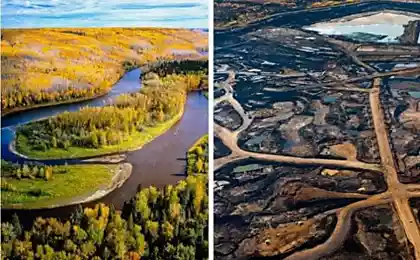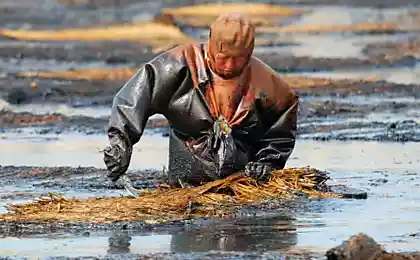1006
Oil - black blood Empire
From the middle of the XIX century, dark, smelly, extracted from the ground liquid turned to blood human civilization.
Oil - the reason or driving force behind many of the conflicts and wars of the twentieth century.
Oil - the subject of rivalry between powers.
Oil - the main commodity in the world, the price of which depends to a large extent "feel" of the global economy.
Oil and products of its processing - something without which humanity today can not live a day.
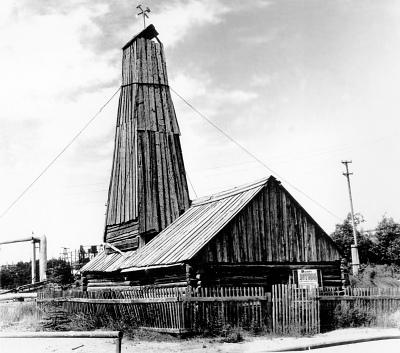
Stone oil and Greek fire
Useful properties of oil have been known to man since ancient times. Exit to the surface oil Iranians called naft, Turks - neft, Greeks - naphta, the Romans - bitumen. And the word has spread after petroleum was created by a fusion of two words: Greek petros (stone) and the Latin oleum (oil).
"Stone oil" in ancient times, widely used in construction. In Egypt and in the area between the Tigris and the Euphrates are found erected over 3 thousand. BC structures, slabs of walls and floors that hold with the help of oil. Bitumen covered the walls of silos and reservoirs. Oil was added to the composition for embalming in ancient Egypt.
In the Middle Ages it mixed into the varnish for better ink. Oil is actively used in medicine, and by the way, not just ancient.
In the middle of the XIX century in the US refined oil called "Seneca Oil" or "butter mountain" was proposed as a remedy for headache, toothache, deafness, rheumatism, dropsy, and was recommended for healing wounds on the backs of horses and mules. Naturally, the oil was used in ancient times, and for lighting.
And finally, for military purposes. The exact composition of the famous Greek fire (oleum incendarium), more than once saved the Byzantine Empire from the enemy today is unknown. But scientists believe that for a mixture, named Greek fire, which could not be put out any water or sand, used oil, tar, saltpeter, sulfur and rosin.
Iranian and Arab chronicles show: in III-IV centuries oil produced on the Apsheron peninsula was exported to Persia, where the spread and other countries.
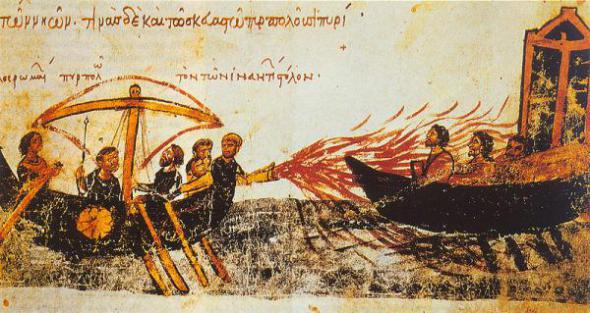
First oil was collected just in the places where it appeared on the surface of the earth. Later they began to dig wells.
Baku Khanate was eventually annexed by the Russian Empire in the XIX century. One would assume that it was by this time should include the birth of the Russian oil industry. However, this is not true.
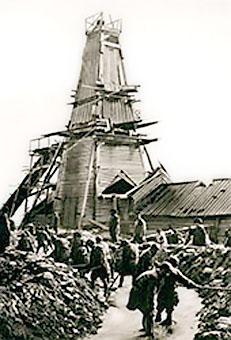
Oil derrick on the river Ukhta
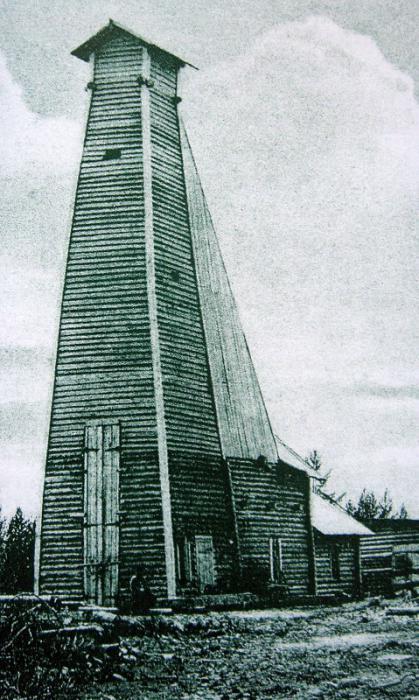
"Combustible dense water»
In the XVI century in Russia is going to "combustible thick water" from the surface of the river Ukhta, brought to Moscow, processed and then sold in pharmacies.
The beginning of the systematic study, the description and registration of groundwater resources in the empire laid by Peter I, created in 1700 Order rudokopnyh Affairs, renamed later in the Berg-Collegium.
Three years later appeared the first documented reference to the opening of Russian oil deposits.
In 1721, Berg-board received a report from Gregory Cherepanov, in search of ore explored the coast of northern rivers. On Ukhta he saw "Oil Springs": on the surface of the river floated a black "oil", which residents gather scoops. In 1724 Cherepanov brought some oil and sent to the Berg-Collegium. Peter I very interested in "sending", but next year the king died, and black Ukhta "oil" forgotten for 20 years.
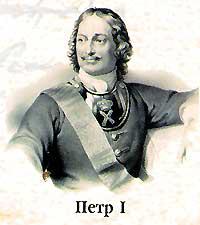
Only in 1745 the Arkhangelsk merchant Fyodor Pryadunov went to Ukhta, contrived to do the extraction and "ghosting" or "peredvaivaniem" oil. He succeeded by Berg-board authorization to establish oil field and pledged to send twice a year in St. Petersburg reports on the state of affairs. For the "doubling" of oil Pryadunov decided to use the experience of distillation and extraction of tar. His oil Pryadunov styled "yellow oil", sold it in drug stores in St. Petersburg and Moscow. Furthermore, in the "yellow oil" add vegetable and used for illumination. But the oil business merchant Pryadunov not rich, and his life ended tragically. For tax evasion, he was thrown into debtors' prison, where he died in 1753. Then fish passed in different hands, in the court of the right to his son eventually returned Pryadunova. But after his death the matter decayed, and 70th years of XVIII century fishing ceased to exist.
Some historians believe the pioneer development of Ukhta oil "virgin land" is not Pryadunova and merchant Nabatova that may, one year ahead of Archangel built on the self-taught Ukhta plant for "peredvaivaniyu" oil. And if Pryadunov collect oil from the water, then Nabatov producing oil using wells, cleans it, and just as Pryadunov sold in pharmacies in Moscow.
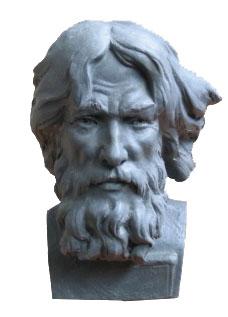
From "peredvaivaniya" for processing
Signed in 1813, Russia and Iran Gulistan peace treaty recognized under the jurisdiction of the Russian Empire of the North Caucasus and Transcaucasia, including Baku khanate. Although de facto Baku oilfields departed Empire in 1806. On the new land settlers were pulled out of Russia.
Among them were the serfs of the Vladimir region - Gerasim brothers, Vasili and Makar Dubinin, who settled in Mozdok. While in the North Caucasus is also mined using heavy oil wells, mainly in the Sunzha, near Braguny and Benoy. She decided to recycle Dubinins.
The eldest, Basil, he made drawings, which in 1823 was built the world's first industrial cube for the distillation of crude oil. In an effort to expand production Dubinin have repeatedly appealed to the authorities for a loan, but always refused. Plant brothers lasted until 1847 and was closed for lack of funds.
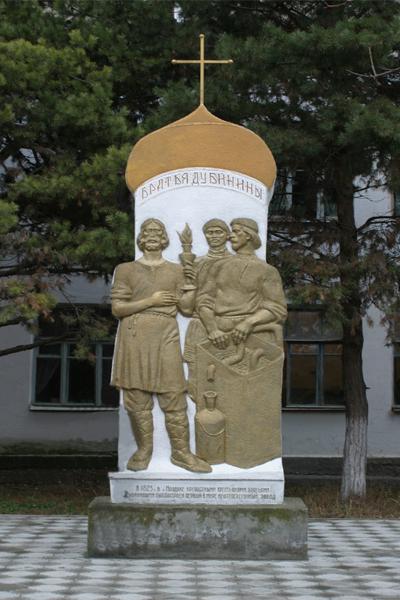
While Dubinins Mozdok take the first steps in refining, arrived in Baku young scientist Nikolai Voskoboynikov - a graduate of the St. Petersburg Mining Cadet Corps. Just two years after entering the fishery Voskoboynikov already in 1827, he was the classification of the local oil extraction process described using the wells and developed proposals for improving the storage conditions. In 1834 he was appointed the director of Baku and Shirvan oil and salt pans. That same year, the Minister for Finance Voskoboynikov report with a proposal to organize in Baku oil processing. Nikolai reasonably pointed out that more than 90% of crude oil sold on the Apsheron Peninsula to Iran, and only the remaining amount of pounds of processed and supplied to the domestic market. This is despite the fact that Russia bought expensive imported, primarily American, Photog.
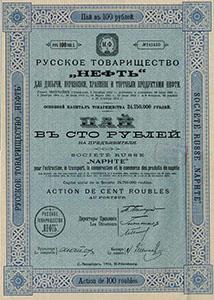
Oddly enough, but reports Voskoboynikova government reacted with attention. By the end of 1837 in Balakhani plant earned designed Voskoboinikov, where the world's first oil refining was applied along with water vapor, and oil is heated by natural gas. These methods are widely used in the future, many years after the death of Voskoboynikova.
However, Nikolai Ivanovich had porukovodit their child: in 1838, the authorities had sent a denunciation of Voskoboynikova, stating that his fault was lost several thousand pounds of oil. Voskoboynikov was removed from office for a long time was under investigation. Despite the fact that in the end he was acquitted - "disappeared" oil literally vanished from public storage - in a post Voskoboynikova not restored, and the factory closed in 1839.
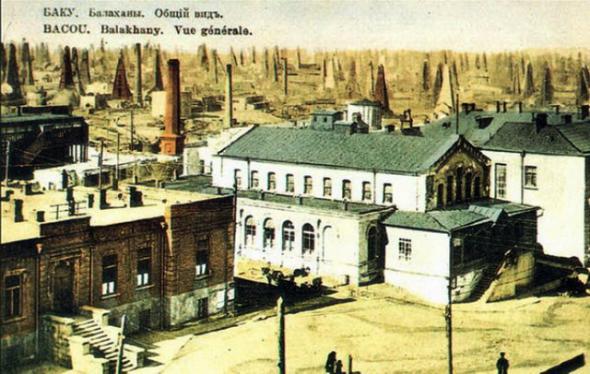
Wax, oil and fuel oil
Population growth and economic development in the XIX century demanded a change of habitual lighting. Lamps with a vegetable or animal fat, candle and torch gave a dim light. Blubber was burning brightly, but it was too expensive, as extracted from coal "town gas».
Blubber - obsolete term, which is called liquid fat extracted from fat of marine mammals (whales, seals) and fish.
Kamfin (a derivative of turpentine oil) gave a lot of light, but it was extremely fire hazard.
Introduced in the 1820s, analogue of kerosene, Photog, proved a good alternative, but the lamp in which it was used, and often much chadili ignited. Despite this, Photog popular. But a truly explosive growth in consumption photogen, more precisely, the kerosene in the second half of the XIX century.
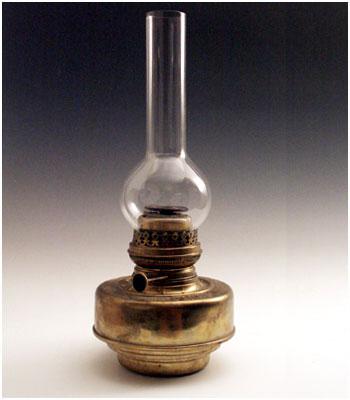
In 1853, Lviv pharmacist Ignacy Lukasiewicz using designer Adam Bratkovsky designed a lamp that we still call the kerosene.
A year later, the Canadian Abraham Gesner applied for a patent for the production of a new "hydrocarbon liquid" called "Kerosene" (from the Greek. Keros - wax and elaion - oil).

Kerosene plant in Baku

By the 70s of the XIX century in the United States has 34 companies produce kerosene. In Russia, this time also worked refineries or as they were called, kerosene plants: in Surakhani, Drohobych, Phanagoria (Taman Peninsula), Moscow and Grozny, Kerch, Nizhny Novgorod, Balakhna on the Volga near Yaroslavl, etc. The largest of these was built near Baku, in Surakhani, refinery merchant Vasily Kokoreva.
Vasiliy got rich at the mercy of wine, "Kokorevskoye vodka" in those days was the notion of a household, means cheap and low quality product. Make a fortune by trading alcohol Kokorev began to invest in the construction of railways, has created the largest in Russia in terms of capital Volga-Kama Commercial Bank, but until then engaged in oil business.
Including because until 1872 in the oil industry used lease system: once every four years the government has sold oil-bearing areas of tax-farmers, they agreed with the miners and processors of bulk purchases of products, lent them, and the prices for the products manufacturers exhibited predatory. And Kokorev lease system, which for the eyes called "otkupschitskim king," was familiar perfectly. It was he who came up with how to get around the problem of paying off the system, combining farming and direct financing of production and extraction, and processing.
Kokorev producing oil, refining it to the factory belonging to it, and its products called "the fotonaftilem».
Kerosene factory early. 20
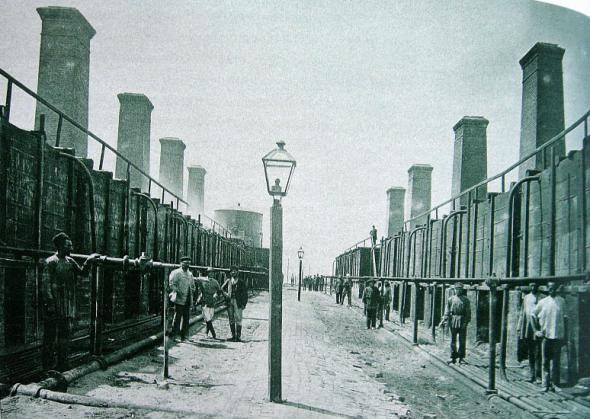
Kerosene station direct communication
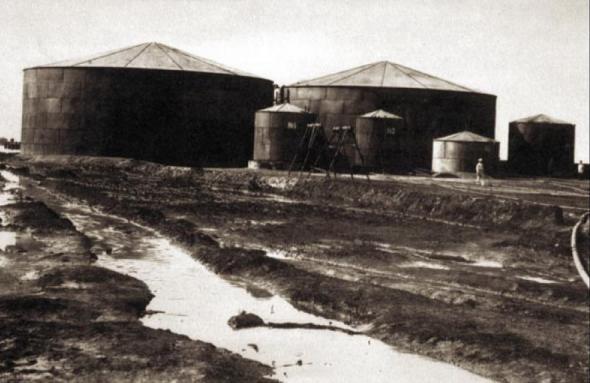
Gusher, con. 19 in
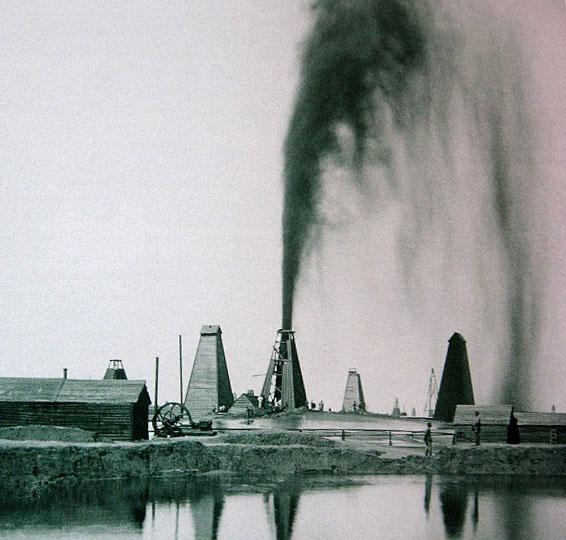
Into the bowels
It is believed that the first industrial method of drilling wells for oil production in the US was used by Edwin L. Drake in 1859, the township Taytusvil, in northeastern Pennsylvania. In this wilderness, former railwayman Drake was sent to shareholders in 1857 "Pennsylvania Rock Oil Company" and "Seneca Oil Company", have decided to produce oil by drilling that was used in the extraction of salt. Then salt deposits drilled almost everywhere where it was mined, including in Russia.
But first drill Salt guessed Chinese who still BC mined it with bamboo drill. Drake proved stubborn small in spite of the problems with funding for addiction hired soledobytchikov whiskey, the lack of results and the fact that the people considered him insane Taytusvilya, he did not give up.
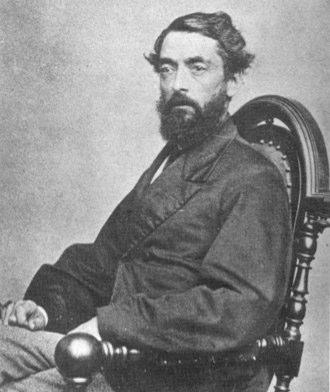
In August 1859 the investors, whose patience and finances depleted, Drake sent a letter demanding to pay the bills and turn the work. But even before it has received a destination drill Pennsylvania reached oil. Do not think in advance about keeping the long-awaited black gold miners poured it in all the dishes had - until the pans. Drake immediately bought up all the loose casks of whiskey in Taytusvile. He had celebrated his victory, but the ending of the story was sad: because of careless handling of the whole banal lamp oil extracted Drake burned in a terrible fire. Drake also, whose name entered the history of the global oil industry, ended his life in abject poverty.
Meanwhile, a method of drilling for oil in the world, was first used in Russia. First proposed in 1844 to drill for oil engineer FA shock method Semenov. His four-year sentence on the tables pylilos metropolitan ministries, but finally in 1848 the first well was drilled in Bibi-Heybat field near Baku. However, it did not produce oil and the method not spread. In 1864, an attempt repeated Colonel Novosiltsev, drill a hole at Anapa. At this time the experience was good, and the drilling is gradually beginning to penetrate into the Russian oil production. After 5 years, drilling was re-launched and Absheron peninsula.
The introduction of mechanical drilling methods led to the explosive growth of oil production. First, in the US, where drilling has become a common method for 13 years earlier than in Russia. But the empire quickly reduces the gap: the transition to paying off the system at a public auction oil field long-term leases and drilling have made the business.
One of the first "oil wells", built by Edwin Drake
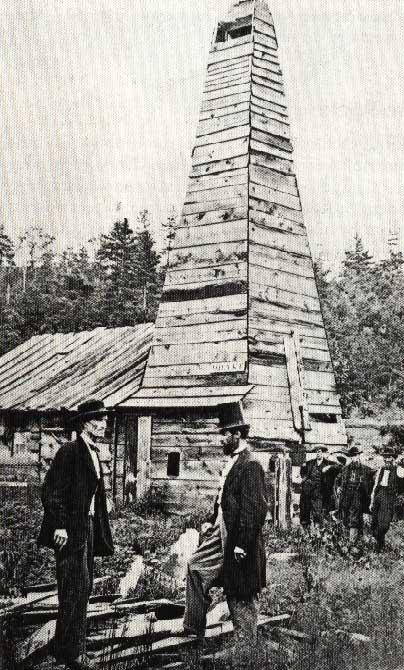
Fuel Oil trace
In 1877, the Finance Minister Count Mikhail Reitern ordered to levy duties on imported kerosene in gold terms, that actually turns the product into a non-competitive goods in the Russian market. At the same time it canceled the excise duty on kerosene produced in Russia, which dramatically increased the profits of local producers.
By 1883, imports of kerosene decreased by 5 times, and the volume of sales of Russian kerosene in the domestic market has increased by 15 times!
But the oil companies happy for long. In just ten years, in 1888, Finance Minister Academician Ivan Vyshnegradsky reintroduced excise duty on kerosene, besides 5 times higher than the previous. Because of the increased demand for kerosene prices on the domestic market fell sharply, and manufacturers have tried to reorient the export flows of kerosene (which is not subject to excise duty), but this plan failed: almost everywhere have dominated the American Standard Oil. Come to grips with John D. Rockefeller, the Russian oil producers for a long time did not give up. Dumping fierce war led even to the fact that revenues from the export of kerosene in the late XIX century, Americans have decreased almost twice, and Russian companies sold kerosene 8 times cheaper than in the domestic market!
But in the end the Russian oilmen lost, failing to win the Americans only geographically close to Empire markets. When it became clear that the foreign "oil expansion" failed, oil producers have found most beneficial for themselves but not for industry, out of the situation. Baku oil was heavy, privydelenii of kerosene it took 70-80% of raw materials in the so-called oil "remnants", or rather oil. "Remains" poured into the oil pits - pits dug in the ground - and then burned. Now, the problem of "residues" seriously interested in the oil.
Count Mikhail Reuters
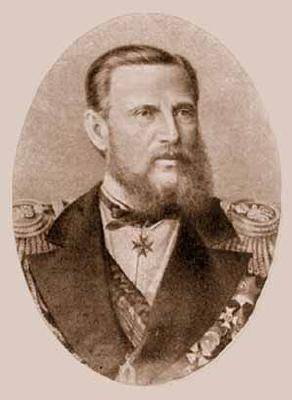
It was able to solve a brilliant Russian engineer Vladimir Shukhov, who in 1879 invented the nozzle.
Atomizer injector - a mechanical sprayer liquid or gas. Used for spraying fuel (fuel oil, diesel fuel, gasoline), such as fuel injection, spraying is carried out due to the high fuel pressure (several atmospheres for gasoline and hundreds of thousands of atmospheres for diesel).
Innovation launched into production at its plants Nobel brothers, which is why it got the name of "Nobel nozzle." Fuel oil as a fuel has quickly gained recognition in just 10-15 years for oil "remnants" of the fleet and crossed the railways. The oil owners have reduced the production of kerosene and the pursuit of profit favored trade "remains." It got to the point where a fuel oil mingled with crude oil, making use of "residues" in the form of fuel dangerous.
Engineer Vladimir Shukhov
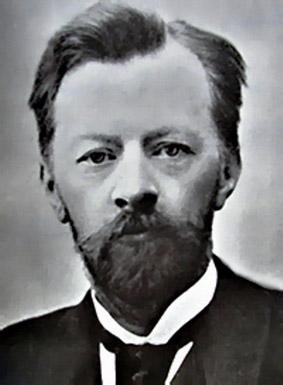
Oil on the water
Since the Empire main oil production was the Apsheron Peninsula, the delivery of oil and oil products in central Russia was including the Caspian Sea and the Volga. Oil and oil products were transported first to the wood, and later iron barrels, which was quite expensive. Complaining of the greed of shipowners, oil producers have tried to come up with new ways of delivery.
Vasily Kokorev even drew as a consultant Mendeleev, who offered to transport goods in the holds of specialized ships. Kokorev built several oil barges, but by a strange coincidence, they burned before launching. So the first in Russia and in the world of successful filler oil transportation in 1873 carried the brothers Artemyev. For two years Artemyev built two oil barges, and in 1878 smart enough to adjust to speed up loading and unloading is not a manual, and a steam pump.
Shipowners and the oil previously mocked the brothers, urgently began retrofitting their fleets. The news about the revolutionary method of transportation of oil has spread rapidly throughout the world his then referred to as "Russian way."
Source:
Oil - the reason or driving force behind many of the conflicts and wars of the twentieth century.
Oil - the subject of rivalry between powers.
Oil - the main commodity in the world, the price of which depends to a large extent "feel" of the global economy.
Oil and products of its processing - something without which humanity today can not live a day.

Stone oil and Greek fire
Useful properties of oil have been known to man since ancient times. Exit to the surface oil Iranians called naft, Turks - neft, Greeks - naphta, the Romans - bitumen. And the word has spread after petroleum was created by a fusion of two words: Greek petros (stone) and the Latin oleum (oil).
"Stone oil" in ancient times, widely used in construction. In Egypt and in the area between the Tigris and the Euphrates are found erected over 3 thousand. BC structures, slabs of walls and floors that hold with the help of oil. Bitumen covered the walls of silos and reservoirs. Oil was added to the composition for embalming in ancient Egypt.
In the Middle Ages it mixed into the varnish for better ink. Oil is actively used in medicine, and by the way, not just ancient.
In the middle of the XIX century in the US refined oil called "Seneca Oil" or "butter mountain" was proposed as a remedy for headache, toothache, deafness, rheumatism, dropsy, and was recommended for healing wounds on the backs of horses and mules. Naturally, the oil was used in ancient times, and for lighting.
And finally, for military purposes. The exact composition of the famous Greek fire (oleum incendarium), more than once saved the Byzantine Empire from the enemy today is unknown. But scientists believe that for a mixture, named Greek fire, which could not be put out any water or sand, used oil, tar, saltpeter, sulfur and rosin.
Iranian and Arab chronicles show: in III-IV centuries oil produced on the Apsheron peninsula was exported to Persia, where the spread and other countries.

First oil was collected just in the places where it appeared on the surface of the earth. Later they began to dig wells.
Baku Khanate was eventually annexed by the Russian Empire in the XIX century. One would assume that it was by this time should include the birth of the Russian oil industry. However, this is not true.

Oil derrick on the river Ukhta

"Combustible dense water»
In the XVI century in Russia is going to "combustible thick water" from the surface of the river Ukhta, brought to Moscow, processed and then sold in pharmacies.
The beginning of the systematic study, the description and registration of groundwater resources in the empire laid by Peter I, created in 1700 Order rudokopnyh Affairs, renamed later in the Berg-Collegium.
Three years later appeared the first documented reference to the opening of Russian oil deposits.
In 1721, Berg-board received a report from Gregory Cherepanov, in search of ore explored the coast of northern rivers. On Ukhta he saw "Oil Springs": on the surface of the river floated a black "oil", which residents gather scoops. In 1724 Cherepanov brought some oil and sent to the Berg-Collegium. Peter I very interested in "sending", but next year the king died, and black Ukhta "oil" forgotten for 20 years.

Only in 1745 the Arkhangelsk merchant Fyodor Pryadunov went to Ukhta, contrived to do the extraction and "ghosting" or "peredvaivaniem" oil. He succeeded by Berg-board authorization to establish oil field and pledged to send twice a year in St. Petersburg reports on the state of affairs. For the "doubling" of oil Pryadunov decided to use the experience of distillation and extraction of tar. His oil Pryadunov styled "yellow oil", sold it in drug stores in St. Petersburg and Moscow. Furthermore, in the "yellow oil" add vegetable and used for illumination. But the oil business merchant Pryadunov not rich, and his life ended tragically. For tax evasion, he was thrown into debtors' prison, where he died in 1753. Then fish passed in different hands, in the court of the right to his son eventually returned Pryadunova. But after his death the matter decayed, and 70th years of XVIII century fishing ceased to exist.
Some historians believe the pioneer development of Ukhta oil "virgin land" is not Pryadunova and merchant Nabatova that may, one year ahead of Archangel built on the self-taught Ukhta plant for "peredvaivaniyu" oil. And if Pryadunov collect oil from the water, then Nabatov producing oil using wells, cleans it, and just as Pryadunov sold in pharmacies in Moscow.

From "peredvaivaniya" for processing
Signed in 1813, Russia and Iran Gulistan peace treaty recognized under the jurisdiction of the Russian Empire of the North Caucasus and Transcaucasia, including Baku khanate. Although de facto Baku oilfields departed Empire in 1806. On the new land settlers were pulled out of Russia.
Among them were the serfs of the Vladimir region - Gerasim brothers, Vasili and Makar Dubinin, who settled in Mozdok. While in the North Caucasus is also mined using heavy oil wells, mainly in the Sunzha, near Braguny and Benoy. She decided to recycle Dubinins.
The eldest, Basil, he made drawings, which in 1823 was built the world's first industrial cube for the distillation of crude oil. In an effort to expand production Dubinin have repeatedly appealed to the authorities for a loan, but always refused. Plant brothers lasted until 1847 and was closed for lack of funds.

While Dubinins Mozdok take the first steps in refining, arrived in Baku young scientist Nikolai Voskoboynikov - a graduate of the St. Petersburg Mining Cadet Corps. Just two years after entering the fishery Voskoboynikov already in 1827, he was the classification of the local oil extraction process described using the wells and developed proposals for improving the storage conditions. In 1834 he was appointed the director of Baku and Shirvan oil and salt pans. That same year, the Minister for Finance Voskoboynikov report with a proposal to organize in Baku oil processing. Nikolai reasonably pointed out that more than 90% of crude oil sold on the Apsheron Peninsula to Iran, and only the remaining amount of pounds of processed and supplied to the domestic market. This is despite the fact that Russia bought expensive imported, primarily American, Photog.

Oddly enough, but reports Voskoboynikova government reacted with attention. By the end of 1837 in Balakhani plant earned designed Voskoboinikov, where the world's first oil refining was applied along with water vapor, and oil is heated by natural gas. These methods are widely used in the future, many years after the death of Voskoboynikova.
However, Nikolai Ivanovich had porukovodit their child: in 1838, the authorities had sent a denunciation of Voskoboynikova, stating that his fault was lost several thousand pounds of oil. Voskoboynikov was removed from office for a long time was under investigation. Despite the fact that in the end he was acquitted - "disappeared" oil literally vanished from public storage - in a post Voskoboynikova not restored, and the factory closed in 1839.

Wax, oil and fuel oil
Population growth and economic development in the XIX century demanded a change of habitual lighting. Lamps with a vegetable or animal fat, candle and torch gave a dim light. Blubber was burning brightly, but it was too expensive, as extracted from coal "town gas».
Blubber - obsolete term, which is called liquid fat extracted from fat of marine mammals (whales, seals) and fish.
Kamfin (a derivative of turpentine oil) gave a lot of light, but it was extremely fire hazard.
Introduced in the 1820s, analogue of kerosene, Photog, proved a good alternative, but the lamp in which it was used, and often much chadili ignited. Despite this, Photog popular. But a truly explosive growth in consumption photogen, more precisely, the kerosene in the second half of the XIX century.

In 1853, Lviv pharmacist Ignacy Lukasiewicz using designer Adam Bratkovsky designed a lamp that we still call the kerosene.
A year later, the Canadian Abraham Gesner applied for a patent for the production of a new "hydrocarbon liquid" called "Kerosene" (from the Greek. Keros - wax and elaion - oil).

Kerosene plant in Baku

By the 70s of the XIX century in the United States has 34 companies produce kerosene. In Russia, this time also worked refineries or as they were called, kerosene plants: in Surakhani, Drohobych, Phanagoria (Taman Peninsula), Moscow and Grozny, Kerch, Nizhny Novgorod, Balakhna on the Volga near Yaroslavl, etc. The largest of these was built near Baku, in Surakhani, refinery merchant Vasily Kokoreva.
Vasiliy got rich at the mercy of wine, "Kokorevskoye vodka" in those days was the notion of a household, means cheap and low quality product. Make a fortune by trading alcohol Kokorev began to invest in the construction of railways, has created the largest in Russia in terms of capital Volga-Kama Commercial Bank, but until then engaged in oil business.
Including because until 1872 in the oil industry used lease system: once every four years the government has sold oil-bearing areas of tax-farmers, they agreed with the miners and processors of bulk purchases of products, lent them, and the prices for the products manufacturers exhibited predatory. And Kokorev lease system, which for the eyes called "otkupschitskim king," was familiar perfectly. It was he who came up with how to get around the problem of paying off the system, combining farming and direct financing of production and extraction, and processing.
Kokorev producing oil, refining it to the factory belonging to it, and its products called "the fotonaftilem».
Kerosene factory early. 20

Kerosene station direct communication

Gusher, con. 19 in

Into the bowels
It is believed that the first industrial method of drilling wells for oil production in the US was used by Edwin L. Drake in 1859, the township Taytusvil, in northeastern Pennsylvania. In this wilderness, former railwayman Drake was sent to shareholders in 1857 "Pennsylvania Rock Oil Company" and "Seneca Oil Company", have decided to produce oil by drilling that was used in the extraction of salt. Then salt deposits drilled almost everywhere where it was mined, including in Russia.
But first drill Salt guessed Chinese who still BC mined it with bamboo drill. Drake proved stubborn small in spite of the problems with funding for addiction hired soledobytchikov whiskey, the lack of results and the fact that the people considered him insane Taytusvilya, he did not give up.

In August 1859 the investors, whose patience and finances depleted, Drake sent a letter demanding to pay the bills and turn the work. But even before it has received a destination drill Pennsylvania reached oil. Do not think in advance about keeping the long-awaited black gold miners poured it in all the dishes had - until the pans. Drake immediately bought up all the loose casks of whiskey in Taytusvile. He had celebrated his victory, but the ending of the story was sad: because of careless handling of the whole banal lamp oil extracted Drake burned in a terrible fire. Drake also, whose name entered the history of the global oil industry, ended his life in abject poverty.
Meanwhile, a method of drilling for oil in the world, was first used in Russia. First proposed in 1844 to drill for oil engineer FA shock method Semenov. His four-year sentence on the tables pylilos metropolitan ministries, but finally in 1848 the first well was drilled in Bibi-Heybat field near Baku. However, it did not produce oil and the method not spread. In 1864, an attempt repeated Colonel Novosiltsev, drill a hole at Anapa. At this time the experience was good, and the drilling is gradually beginning to penetrate into the Russian oil production. After 5 years, drilling was re-launched and Absheron peninsula.
The introduction of mechanical drilling methods led to the explosive growth of oil production. First, in the US, where drilling has become a common method for 13 years earlier than in Russia. But the empire quickly reduces the gap: the transition to paying off the system at a public auction oil field long-term leases and drilling have made the business.
One of the first "oil wells", built by Edwin Drake

Fuel Oil trace
In 1877, the Finance Minister Count Mikhail Reitern ordered to levy duties on imported kerosene in gold terms, that actually turns the product into a non-competitive goods in the Russian market. At the same time it canceled the excise duty on kerosene produced in Russia, which dramatically increased the profits of local producers.
By 1883, imports of kerosene decreased by 5 times, and the volume of sales of Russian kerosene in the domestic market has increased by 15 times!
But the oil companies happy for long. In just ten years, in 1888, Finance Minister Academician Ivan Vyshnegradsky reintroduced excise duty on kerosene, besides 5 times higher than the previous. Because of the increased demand for kerosene prices on the domestic market fell sharply, and manufacturers have tried to reorient the export flows of kerosene (which is not subject to excise duty), but this plan failed: almost everywhere have dominated the American Standard Oil. Come to grips with John D. Rockefeller, the Russian oil producers for a long time did not give up. Dumping fierce war led even to the fact that revenues from the export of kerosene in the late XIX century, Americans have decreased almost twice, and Russian companies sold kerosene 8 times cheaper than in the domestic market!
But in the end the Russian oilmen lost, failing to win the Americans only geographically close to Empire markets. When it became clear that the foreign "oil expansion" failed, oil producers have found most beneficial for themselves but not for industry, out of the situation. Baku oil was heavy, privydelenii of kerosene it took 70-80% of raw materials in the so-called oil "remnants", or rather oil. "Remains" poured into the oil pits - pits dug in the ground - and then burned. Now, the problem of "residues" seriously interested in the oil.
Count Mikhail Reuters

It was able to solve a brilliant Russian engineer Vladimir Shukhov, who in 1879 invented the nozzle.
Atomizer injector - a mechanical sprayer liquid or gas. Used for spraying fuel (fuel oil, diesel fuel, gasoline), such as fuel injection, spraying is carried out due to the high fuel pressure (several atmospheres for gasoline and hundreds of thousands of atmospheres for diesel).
Innovation launched into production at its plants Nobel brothers, which is why it got the name of "Nobel nozzle." Fuel oil as a fuel has quickly gained recognition in just 10-15 years for oil "remnants" of the fleet and crossed the railways. The oil owners have reduced the production of kerosene and the pursuit of profit favored trade "remains." It got to the point where a fuel oil mingled with crude oil, making use of "residues" in the form of fuel dangerous.
Engineer Vladimir Shukhov

Oil on the water
Since the Empire main oil production was the Apsheron Peninsula, the delivery of oil and oil products in central Russia was including the Caspian Sea and the Volga. Oil and oil products were transported first to the wood, and later iron barrels, which was quite expensive. Complaining of the greed of shipowners, oil producers have tried to come up with new ways of delivery.
Vasily Kokorev even drew as a consultant Mendeleev, who offered to transport goods in the holds of specialized ships. Kokorev built several oil barges, but by a strange coincidence, they burned before launching. So the first in Russia and in the world of successful filler oil transportation in 1873 carried the brothers Artemyev. For two years Artemyev built two oil barges, and in 1878 smart enough to adjust to speed up loading and unloading is not a manual, and a steam pump.
Shipowners and the oil previously mocked the brothers, urgently began retrofitting their fleets. The news about the revolutionary method of transportation of oil has spread rapidly throughout the world his then referred to as "Russian way."
Source:


